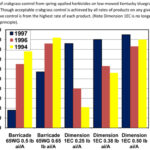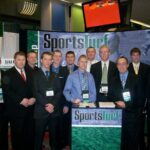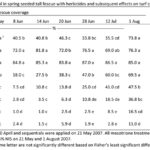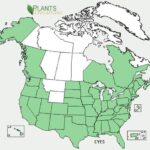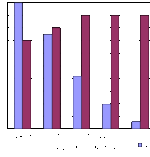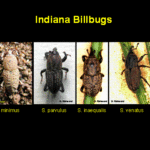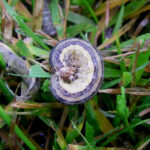Turf Tips Archives
Professionals Only: Syngenta’s Tenacity receives federal label for residential and sports turf
After much delay, Tenacity has finally received its federal label for residential and sports turf. That’s the good news, but the bad news is that state labeling is still ongoing and it won’t be for sale likely until Fall 2009 or early 2010. Experimental product is available on a limited basis from your Syngenta rep […]
Seed now to get a jump on crabgrass germination
Though spring is not our favorite time to seed, it’s important to seed as soon as possible to allow the cool-season grasses to germinate prior to crabgrass. Crabgrass germinations can occur at soil surface temperatures as low as 50F, but germination is slow and these plants (hopefully) may be killed by an ensuing frost. Most […]
Tracking Growing Degree Days for Applications? Indiana now in expanded GDD Tracker
By popular demand, we have joined with Michigan State to include Indiana sites in GDD Tracker (http://www.gddtracker.net/). This site allows you to quickly and easily check your current growing degree day accumulation. It also uses a number of models to help with decisions on timing of growth regulators for Poa annua seedheads, preemergence herbicides for crabgrass, and […]
Professionals Only: Premergence herbicide strategies
As spring is closing in, we are fielding a number of questions; four major questions right now: Which preemergnce herbide to use? That one is pretty easy. We have only three active ingredients relatively easily available and they are dithiopyr, pendimethalin, and prodiamine. Our research shows that as long as they are applied at reasonable […]
MSMA still available but use is limited
Though MSMA is rarely used by professionals anymore in cool-season turf, it is an excellent postemergent crabgrass herbicide for zoysia and bermudagrass grown in the southern half of Indiana. It is especially useful during sprigging or seeding operations because it is safe on seedlings. Following is a brief summary of the current status and the […]
Purdue Team WINS the 2009 GCSAA TURF Quiz Bowl Competition!!!
Six teams traveled last week to the International Golf Industry Show in New Orleans, LA to compete in the 15th annual Golf Course Superintendents Association of America (GCSAA) Collegiate Turf Quiz Bowl. This competition consists of a 3.5 hour written examination that consists of the identification of seeds, turfgrasses, diseases, insects and weeds. In addition […]
Preemergence Yellow Nutsedge Control In Spring Seeded Tall Fescue With Tenacity, Dismiss and Echelon, 2007
Summary: This study showed that Dismiss and Echelon provided excellent preemergence yellow nutsedge control, but these herbicides should not be used in a tall fescue seedbed. Tenacity applied twice at 0.1 87 lb/A provided a level of yellow nutsedge control similar to Dismiss and Echelon. However, Tenacity works slowly and must be applied twice to […]
Yellow Nutsedge, The Scourge of Lawns and Landscapes in Nebraska
Yellow nutsedge (Cyperus esculentus) is a common, persistent and troublesome weed in lawns and landscapes in Nebraska. This is especially true from Kearney east into Iowa. Yellow nutsedge thrives in waterlogged soil and their presence often indicates that drainage is poor, irrigation frequency/quantity are excessive, or sprinklers/valves are damaged and leaking. Once this tenacious weed […]
Yellow nutsedge may be far off concern, but spring applications show promise
Yellow nutsedge is now one of the most common weeds in lawns, athletic fields and golf turf. Even though all textbooks say it thrives in wet areas, we see some of our worst yellow nutsedge infestations in dry years. Cultural controls will always help, but the standard herbicides are Basagran, SedgeHammer (formerly Manage), Certainty, and […]
Calculating the pounds of fertilizer to apply
There are literally thousands of fertilizers and fertilizer/pesticide combinations available to homeowners and professionals. Therefore, we can’t recommend how many pounds of a specific fertilizer to apply, but rather we must recommend fertilization rates in pounds of nitrogen per thousand square feet or lbs N/1000 sq ft. You can use our fertilizer calculator at www.agry.purdue.edu/turf/fertcalc/Fertilization%20calc.html […]
Choosing a Preemergence Herbicide
There are many, many formulations and combinations of preemergence herbicides available for the professional. Following are some suggestions for purchasing and using preemergence herbicides. Control from every preemergence herbicide can vary from year to year, or location to location. Therefore, you can’t judge the performance of a product or a specific rate of that product […]
Thank You to Everyone who Attended the Indiana Green Expo
On behalf of the Turf Program, Midwest Regional Turf Foundation (MRTF), Indiana Nursery and Landscape Association (INLA), and Indiana Flower Growers Association (IFGA), I’d like to thank everyone who helped with and/or attended the 2009 Indiana Green Expo on January 12-14 at the Indiana Convention Center in Indianapolis. This marks the third year of cooperation […]
Purdue Alumni and Friends Reception at the GCSAA in New Orleans
For those making the trip to New Orleans for the Golf Industry Show, the Purdue Alumni and Friends Reception will be held Thursday, February 5, 6:00 to 8:00 pm in the Bayoe Jean Lafitte room of the Embassy Suites, 315 Julia Street. It’s a great opportunity to catch up with your classmates and old friends. […]
Still time left to sign up for Indiana Green Expo to be held Jan 12-14!
The registration deadline is fast-approaching for the Indiana Green Expo and forms must be postmarked by Dec. 31, 2008. The Indiana Green Expo is the largest turf, ornamental, nursery, and landscape conference in Indiana and is jointly sponsored by the Midwest Regional Turf Foundation, Indiana Nursery and Landscape Association, and now the Indiana Flower Growers […]
How Late is Too Late to Control Dandelions and Other Weeds?
Even though the drought has limited some broadleaf weed applications this month, we are now in the prime season for broadleaf weed control. Actually there is plenty of time left for good control. Nebraska research reported in 2002 showed 2,4-D and/or dicamba were far more effective in controlling dandelions and Canada thistle when applied 1 […]
Billbugs a Pest in 2008? Keep Them in Mind for 2009
This summer saw some extensive billbug damage in many parts of Indiana. Obvious damage to Kentucky bluegrass in the central and northern parts of the state are not uncommon and can usually be attributed to the bluegrass billbug. However, reports of severe damage to Zoysiagrass in the Evansville area really caught my attention. Zoysiagrass is […]
MRTF Golf Day at The Fort in Indianapolis on September 29
Openings are still available for the MRTF Golf Day at The Fort Golf Resort in Indianapolis on September 29. This annual event is held to promote turfgrasss research, raise awareness of the Purdue Turfgrass Science Program, and provide an enjoyable day of golf. With a Centralized location and afternoon shotgun start we hope to draw […]
Fall Nitrogen Fertilization Benefits All Cool-Season Turfs
All cool-season turfgrasses benefit from fall nitrogen (N) fertilization, regardless if it is a lawn, athletic field, or golf course green, tee or fairway. Normally fertilization should begin in mid-September and continue one or two more times until about mid-November. Starting the fertilization program in September will take advantage of favorable growing weather and encourage […]
Armyworms Are Poised For Battle
We have been monitoring reports of very large infestations of armyworm moths flying into Kentucky this spring. Armyworms move north with storms from the southern states each year and depending upon how and where the storms blow will dictate when and how many moths we have to deal with. Fortunately, in Indiana we have not […]
New Options at Midwest Regional Turf Field Day on July 15
Even though the Midwest Regional Turf Field Day is one of the largest in the country, we’re always looking for new and improved ideas. The MRTF Board of Directors and the Purdue Staff have put their heads together and come up with a number of new ideas for this year’s Field Day including: Morning lawn […]
